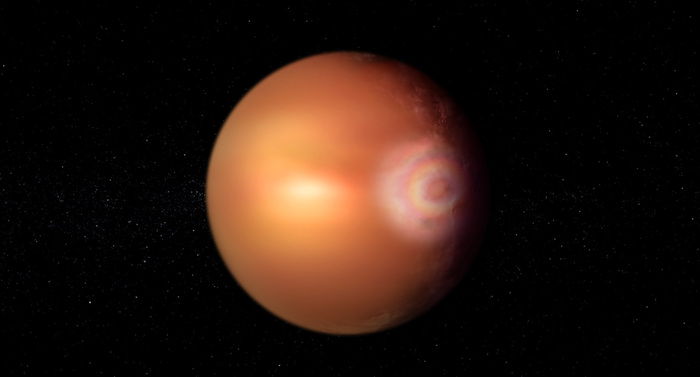2019 was a special year for the exoplanet community. On December 10, the Swiss Michel Mayor and Didier Quelozden received the Nobel Prize in Physics for their research in this area. It was 24 years ago that they discovered the first planet outside our solar system at 51 pegasi b.
Since then, scientists have found more than 4,000 more specimens. This makes it clear that the universe is full of planets orbiting distant stars like the earth around the sun. In order to investigate some of them in more detail, the European Space Agency is expected to launch a new satellite on December 17. The "Cheops" (Characterizing Exoplanet Satellite) mission is under Swiss leadership and is intended to measure the size of exoplanets.
To do this, the satellite takes a closer look at one star and its companions. This is the big difference to the other missions like "Kepler" or "Tess", which were mainly built to discover new exoplanets and to look at many stars at the same time.
photo gallery
19 pictures
Galileo: Europe's own navigation system"We measure the light we get from a star," says Cheops chief executive Willy Benz. If an exoplanet passes between its star and the "Cheops" telescope, it covers a small part of the star's surface from the telescope's perspective. "This coverage results in a little less light in our telescope," explains the professor of physics and astrophysics from the University of Bern. This is how the size of the planet can be calculated.
The scientists already know the weight of many planets through another method of observation from Earth. And size and weight together make up the average density. "With the medium density you can make statements about what the planet could consist of," says Benz. Is it a gas planet? Or is the celestial body made of iron, stone or maybe even water? "Cheops" is also said to provide information about a possible atmosphere.
photo gallery
15 pictures
NASA spaceship: With "Orion" back to the moon"Cheops" is to study several hundred exoplanets that are larger than Earth and smaller than Neptune, that is, between 10,000 and 50,000 kilometers in diameter.
The satellite will fly at an altitude of around 700 kilometers and will be controlled from Spain. The scientific operations center is in Switzerland. The joint mission of Esa and Switzerland includes a consortium from eleven other countries, including Germany. The German Aerospace Center (DLR) therefore supplied two modules of the satellite; they were built in Berlin-Adlershof.
The "Cheops" satellite weighs around 300 kilograms and will be launched into space together with another payload from the Esa spaceport in Kourou (French Guiana). For Switzerland, it is still something special, says Benz: "It is the first time that we are not just building an instrument or part of an instrument for a mission, it is the first time that we are taking care of the entire mission. "











